Best of 2020
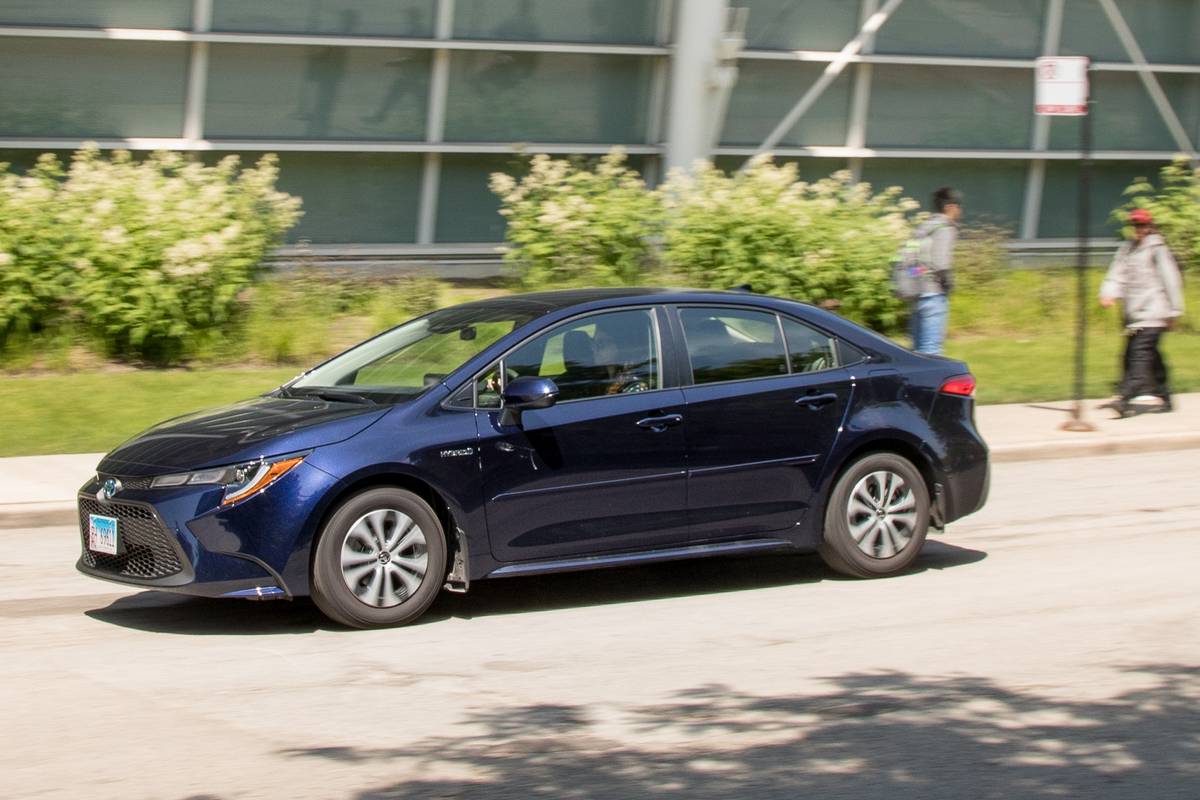
2020 Toyota Corolla Hybrid
The 2020 Toyota Corolla Hybrid is the first Corolla to get a high-efficiency, electrified hybrid version in the U.S., and it certainly looks good on paper with a 52-mpg combined EPA rating and $24,055 starting price (including destination). The Corolla Hybrid’s value quotient is instantly favorable, but where the gasoline-electric sedan really impressed us was on the road.
It wasn’t uncommon to see the onboard trip computer tick past 60-70 mpg while commuting between the city and suburbs under favorable conditions, and without serious coaxing. The more conservative Eco driving mode certainly helped stretch the Corolla Hybrid’s legs — and it has a freakishly long pair of legs, too, with a pickup-truck-like 593 miles of maximum driving range. The Corolla Hybrid does all of this in a normalized package with a traditional gear selector and sedan shape missing from the funky Prius, while getting just as good fuel economy in a car with confident ride and handling that’s also very unlike a hybrid.
What takes the cake is that compared with a similarly equipped non-hybrid Corolla SE (with Premium Package), the Hybrid SE is fuel efficient and affordable enough that it should take less than 2.5 years to recoup the extra cost (assuming current fuel prices, 52 mpg combined and driving 15,000 miles a year). The path to black isn’t a given with many electrics and hybrids, nor is it the only reason people buy these types of cars, but the path is at least a little clearer in the Corolla Hybrid.
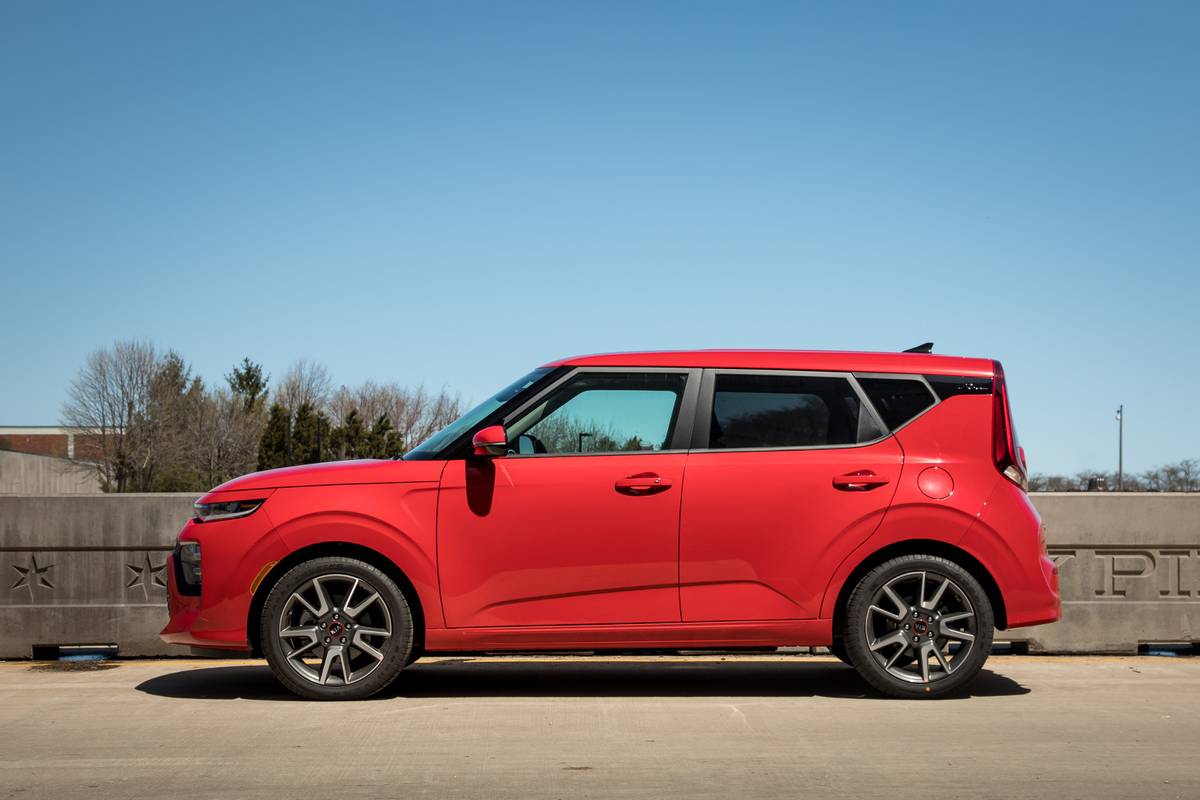
2020 Kia Soul
It’s not easy to modernize and improve an arguable icon and still keep the qualities that made it “a thing” in the first place, but Kia pulled it off with the 2020 Soul, and with it earned a Best of 2020 nomination. The redesigned Soul holds onto the things we liked — such as its distinctive look and practical shape — but applies a more modern design touch in the process and adds improvements and new features that keep it a best-of-breed competitor among subcompact vehicles.
Amid the improvements is a stiffer, better-handling chassis and a 2.0-liter four-cylinder now standard for all models that also delivers improved gas mileage. A turbo engine upgrade with a dual-clutch automatic and sportier suspension are still available for buyers looking for more driving fun.
The new cabin continues to have unexpected people room front and rear, given the Soul’s tidy footprint, and it now is quieter with a more refined ride. Materials are improved a bit, too, while it continues to play above its price with creative interior design elements and color and lighting accents that seem fun, not cheap. Meanwhile, already generous cargo space behind the backseat increased by 5 cubic feet. The 2020 also offers an updated array of standard and optional tech that should leave the buyer of no trim level feeling tech-deprived, including 7- and 10.25-inch touchscreens with user-friendly multimedia systems, decent standard and optional audio, and some unexpected upscale options at this price, such as a heated steering wheel.
The redesigned Soul kept its soul while adding even more value for the lowest entry price of any of our nominees.
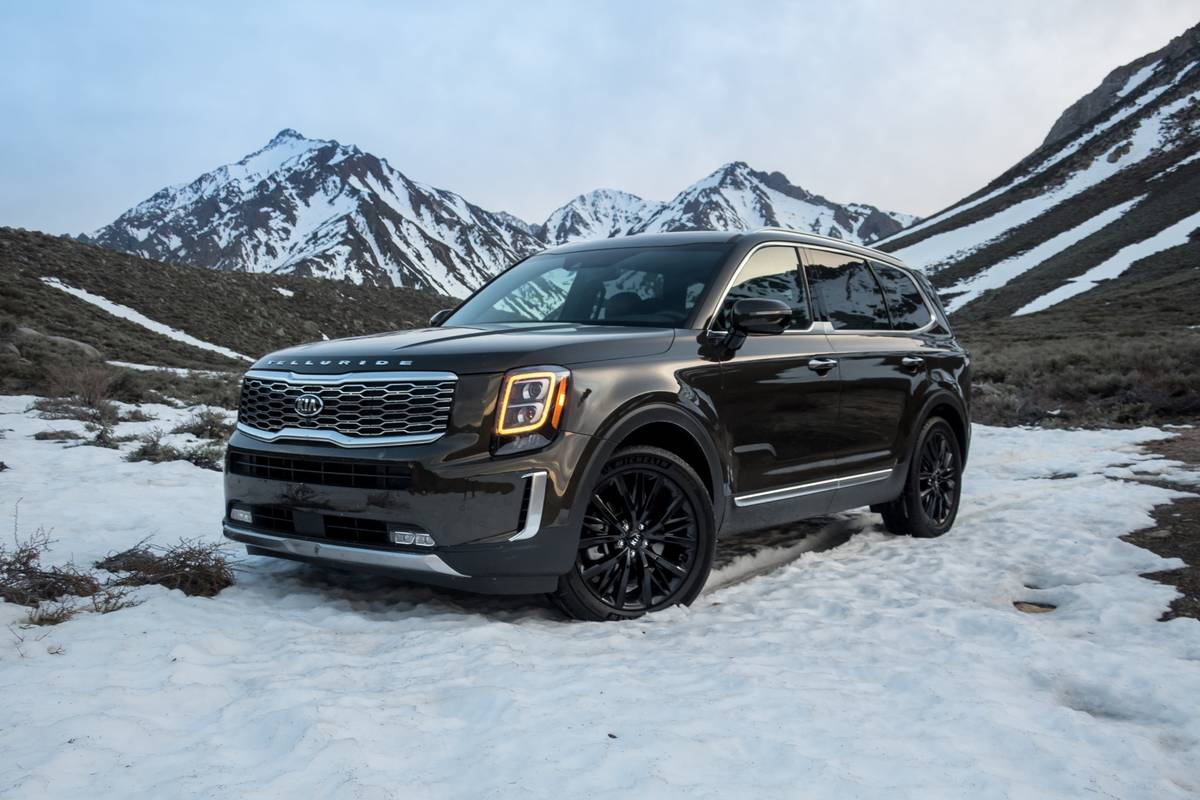
2020 Kia Telluride
The new Kia Telluride was a favorite of ours from very early on, even earlier than its sister vehicle and co-nominee the Hyundai Palisade, due to Kia’s full-court press at trade shows and through advertising. (Thanks to its Super Bowl commercial and heavy rotation of TV commercials, most people remain more familiar with the Telluride than the Palisade even though the Hyundai made its formal debut earlier than the Kia at the 2018 Los Angeles Auto Show. We named the Telluride Best in Show of the 2019 Detroit auto show.)
Though the models are foundationally the same, there are some subtle differences that can push you one way or the other. Both have a smooth, refined V-6 powertrain; ample space for seven; a spacious, upscale, airy cabin; all the latest multimedia technology; and chargers and cupholders aplenty for even the most thirsty, connected families. Some of us prefer the Telluride’s traditional shift lever instead of a push-button setup, as well as its styling (though we don’t judge based on exterior design). It has a well-damped ride, comfortable accommodations in all three rows of seats, plenty of headroom, excellent outward visibility and top-notch cabin materials that make riding in the Telluride a pleasant experience. But the clincher is the value equation: Load up a Telluride with every possible goodie and you’re still not going to hit 50 grand, whereas competitors’ smaller SUVs with less content and fewer safety features can easily surpass that number. Luxurious appointments, spacious interior, excellent powertrains, state-of-the-art technology and value to boot? It’s hard to beat the Kia Telluride.
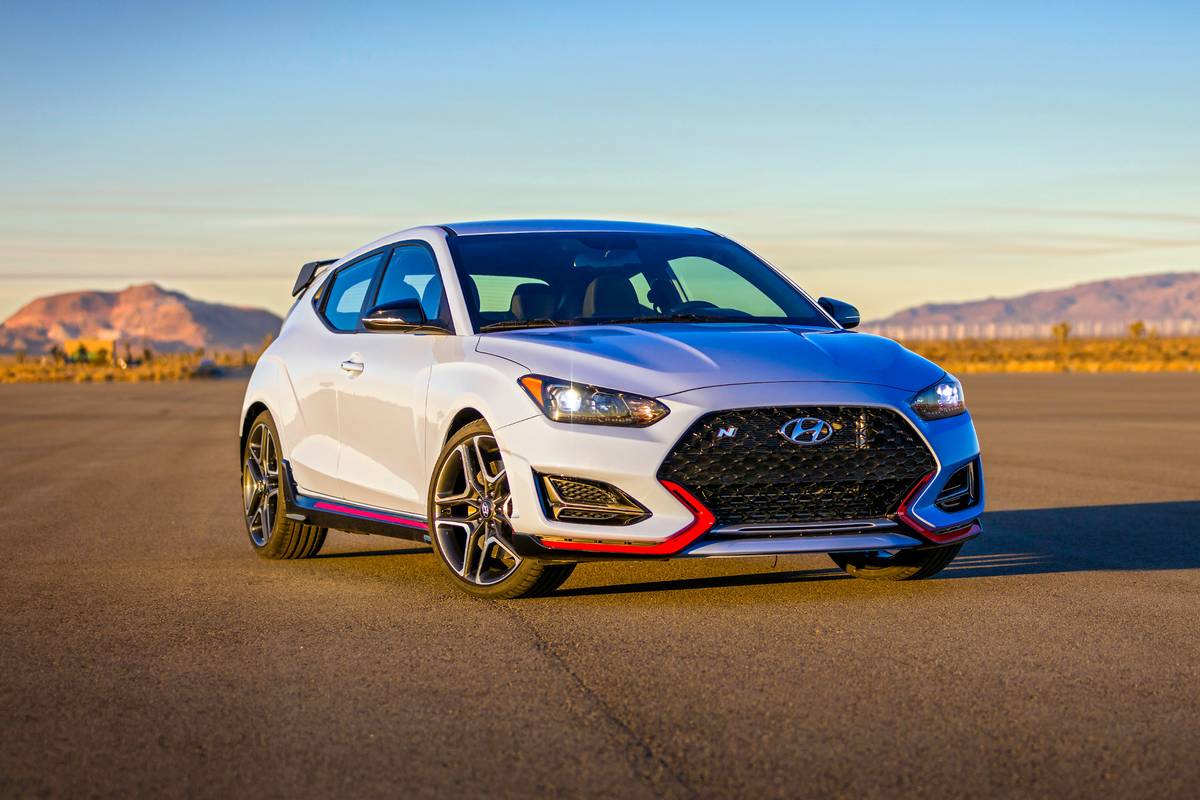
2020 Hyundai Veloster N
The regular Hyundai Veloster was a nominee for this award in 2019, and in 2020 it’s the performance sibling’s turn. The Veloster N takes the Veloster’s playful nature, adds more horsepower and some suspension wizardry, and then cranks the fun dial so hard it breaks clean off.
It’s difficult for a performance car to earn a nomination for our top award. (We also nominated this model for our Most Fun-to-Drive honor.) Look around and you’ll see that the other vehicles are much more practical, which would be one of the last adjectives used to describe this manual-transmission-only, three-door hatchback. But the Veloster N is truly special, delivering plentiful performance in an accessible way. From the perfectly weighted steering to the eager turbocharged engine, the Veloster N is that rare breed of car capable of being truly in sync with its driver.
Another part of the reason that the Veloster N stands out is that it was so unexpected. A brand previously known more for providing lots of value but little else has delivered one of the most engaging drives of the year — and of course it does it at an incredibly approachable price. A Veloster N with the Performance Package costs a hair over $30,000, giving the Veloster N an unmatched smile-per-dollar ratio. The hot-hatch championship belt has a new, surprising home in the Hyundai garage, and it’s so engaging, so reminiscent of the visceral sports cars of decades past that it deserves a shot at our top honor.
Winner: 2020 Hyundai Palisade
Hyundai’s all-new Palisade has the credentials for a good family SUV, such as roomy second- and third-row seating, but Hyundai went well beyond that. Cabin materials in top trim levels exude near-luxury quality and technologies abound, including available full virtual gauges and a big 10.25-inch touchscreen, but nothing feels overly complex to operate. Controls are straightforward and onscreen menus are intuitive.
The Palisade shares its underlying architecture — and a combination of utility, refinement and value — with another nominee, the new 2020 Telluride from related automaker Kia. As Cars.com’s recent 2020 3-Row SUV Challenge revealed, the differences between these two models are slim enough that you could be swayed in either direction by your personal preference for their styling, a particular feature or its execution. (Our judging excludes styling because observers can draw their own conclusions based on a simple photograph.) Ultimately, we preferred the Palisade, which boasts slight advantages in driver-accessible storage space and convenience features. It also edges out the Telluride in overall cabin quality: Top trim levels are more lavish, and lower trims exhibit slightly less cost-cutting. Differences that seem small on paper (such as how the Palisade Limited shows blind spot images on the left and right sides of the instrument panel versus the Telluride’s single, central location) feel larger because both models have so few outright flaws.
Drivability shines, too. The Palisade has a controlled ride and appropriately low-effort steering. The 3.8-liter V-6 packs enough low-end grunt to move the SUV with power to spare. Most of us prefer the Telluride’s conventional gearshift over the Palisade’s push-button selector, but Hyundai’s space-saving selector at least clears up space for more console storage bins. Impressive doesn’t mean impractical.
Further to that end, luggage volume is respectable even with all the seats up. Standard cargo-area controls fold the second row down (a rare convenience in this class), and a power-folding third row is optional — and not offered in the Telluride. As many as seven USB ports keep mobile devices charged.
Value ties it all together. The Palisade starts in the low $30,000s and tops out with factory options around $47,500 with destination. Top trim levels boast quality that wouldn’t seem out of place from Hyundai’s nascent luxury brand, Genesis. Yet such lavishness doesn’t push the Palisade into $50,000-plus territory, a ceiling some rivals handily break. Hyundai’s impressive warranty cements the case for the automaker’s latest family SUV. The Palisade gets Cars.com’s enthusiastic nod for Best of 2020.
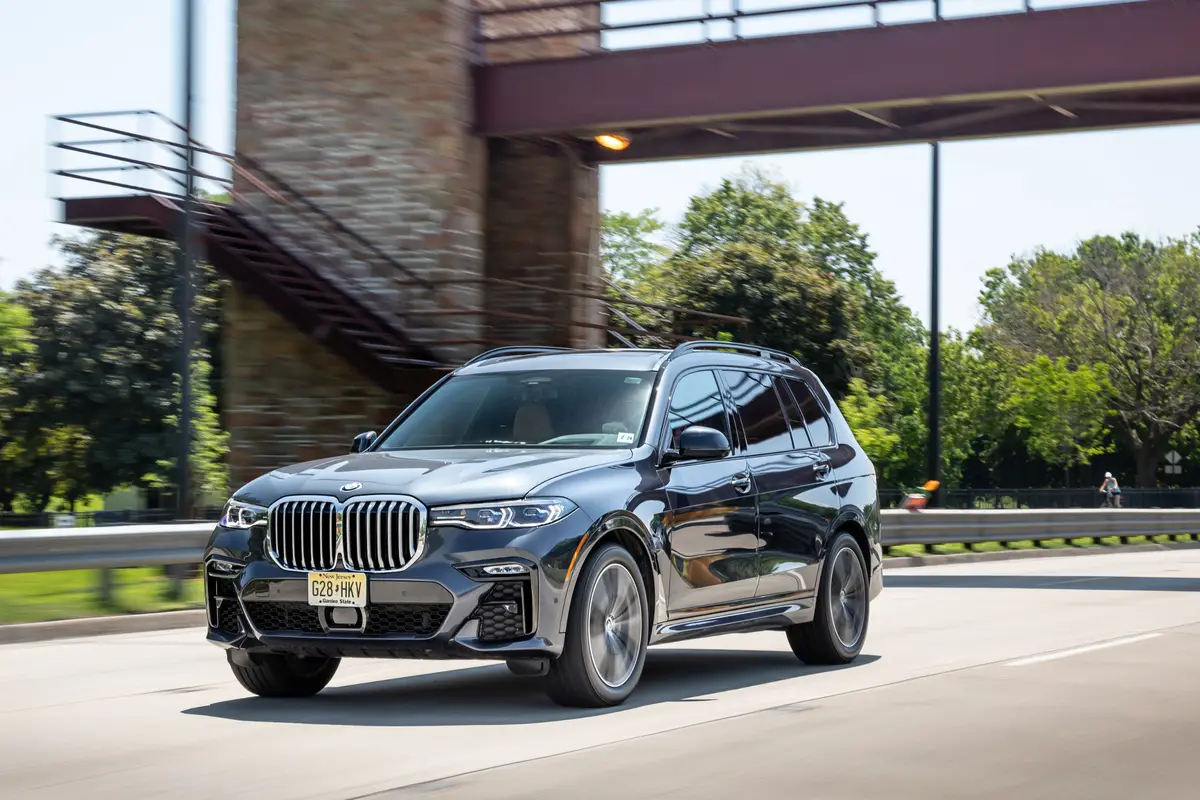
2020 BMW X7
BMW was one of the first luxury brands to jump into the SUV game when it launched the X5, and the German automaker has expanded its SUV lineup considerably in the years since. The one key model that’s been missing, however, has been a true flagship SUV, but BMW has one now in the three-row full-size X7 — and what a flagship it is.
With seating for six or seven, depending on its configuration, the X7 comes standard with a 335-horsepower, turbocharged 3.0-liter six-cylinder engine or a choice of two twin-turbo 4.4-liter V-8s, one rated at 456 hp and the other 523 hp. All X7 models have an eight-speed automatic transmission, standard all-wheel drive and a self-leveling air suspension.
The X7 is also packed with technology designed to entertain and make the driving experience more enjoyable. A Wi-Fi hot spot with a data trial and Apple CarPlay smartphone connectivity are standard, and the optional Extended Traffic Jam Assistant, which helps manage the X7’s speed and lane position, can make low-speed highway driving less taxing. The X7’s cabin can also be richly appointed with premium leather seats and a massage feature for the front buckets along with unique design elements like handmade glass controls.
It all comes together on the road, where the X7 is a supremely luxurious SUV that’s made for long-drive comfort. What’s more, the available V-8 engines make it shockingly quick with a 0-60-mph time of just 4.5 seconds for the 523-hp version, according to BMW. No matter which way you look at it, the X7 is top-notch.
